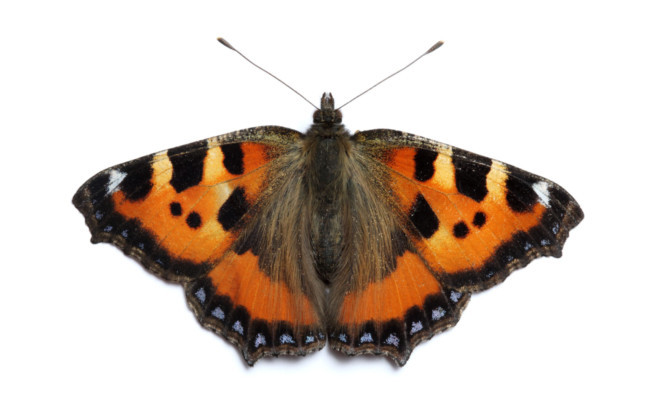When summertime arrives and the sun comes out it’s natural to expect insects such as colourful butterflies and buzzing bees to appear in parks and gardens. Sadly, these important pollinators are dying out, largely due to a loss of habitat compounded by poor spells of weather. Now conservationists are hoping people power will help them recognise patterns of decline, so they can take early action.
Tomorrow sees the start of the annual Big Butterfly Count run by national charity Butterfly Conservation. It runs until August 11 and anyone can take part all that’s needed is 15 minutes to sit in the garden or go for a walk to count how many are spotted. Results can be submitted online or via a free app.
It’s at this time of year that most butterflies are at the adult stage of their life cycle, which is why the Big Butterfly Count nationwide survey happens now (they’re easier to spot, for one thing). Launched in 2010, it has rapidly become the world’s biggest survey of butterflies. More than 25,000 people took part last year, counting 223,000 individual butterflies and day-flying moths.
More than 1,000 counts were done in Scotland and the top 10 species spotted were Ringlet, Meadow Brown, Six-spot Burnet, Small Tortoiseshell, Green-veined White, Small White, Common Blue, Large White, Speckled Wood and Red Admiral.
One of the biggest revelations was the fact that the common Small Tortoiseshell fared badly right across the UK and this year’s results will be analysed to determine whether the decline is continuing.
In Scotland, there are also projects under way to monitor individual species and Scottish Natural Heritage is focusing this year on the Chequered Skipper, Small Blue and Large Heath particularly in the central belt. In previous years, focus has been on the Comma, Small Tortoiseshell, the Peacock and Orange-tip.
Butterflies react quickly to changes in the environment making them excellent biodiversity indicators. Declines in the species can therefore act as an early warning sign for other wildlife. The count also helps conservationists plan how to protect butterflies from extinction, as well as understand the effect of climate change on wildlife.
The campaign has gathered backing from prominent figures such as Sir David Attenborough (who is president of Butterfly Conservation) Alan Titchmarsh MBE and actress Joanna Lumley OBE.
At a launch for the count earlier this week, Sir David Attenborough said that the washout summer of 2012 coupled with long-term declines means there are probably fewer butterflies in the UK than at any point during his lifetime.
He said: “Butterflies are vitally important. Their presence acts as a barometer of the health of our environment. Their ongoing decline tells us that all is not well in the British countryside.”
The recent settled and sunny weather should act as a boost for the insects, however, providing the public with more opportunities to spot them.
Paul Kirkland, director of Butterfly Conservation Scotland, says butterflies and moths are generally disappearing because of a loss of habitat and food: “It’s intensive agriculture which has seen off a large proportion of our butterflies, as well as bees. These are native wild species and they need native wild habitats. In modern lowland farmland you can only find these habitats along hedgerows, on roadside verges or disused railway lines.”
The insects favour plants such as buddleia, scabious, knapweed and bluebells that are rich in nectar and pollen. Native wildflowers are a good source of sustenance. Despite the often unfavourable weather, Scotland’s butterflies and moths are generally faring better in the uplands than in the intensively-farmed east.
Paul continues: “No native butterfly can survive in a modern arable field at all so that’s why you tend to see more on the east coast in places such as sand dunes and nature reserves or on the west coast, where agriculture is less intensive.”
People can do the Big Butterfly Count wherever they like, whenever they like and submit multiple surveys. It’s also just as important to record events when there are no sightings at all. A handy identification can be downloaded to help.
Paul goes on: “Each year the weather is good for some species and bad for others but in the last few years we have seen a really unexpected decline in parts of the UK for the Small Tortoiseshell which used to be our most common butterfly. It’s these sorts of large-scale schemes that pick up these changes at the start of a decline.
“Last year, numbers were very low because the weather was so poor and numbers were low this spring, again because of the cold weather, but they are really picking up now. Now is the peak time for butterflies, so if people can get into their gardens or out to nature reserves, then they’ll see good selection of species.”
Visit www.bigbutterflycount.org for more information on how to take part.
